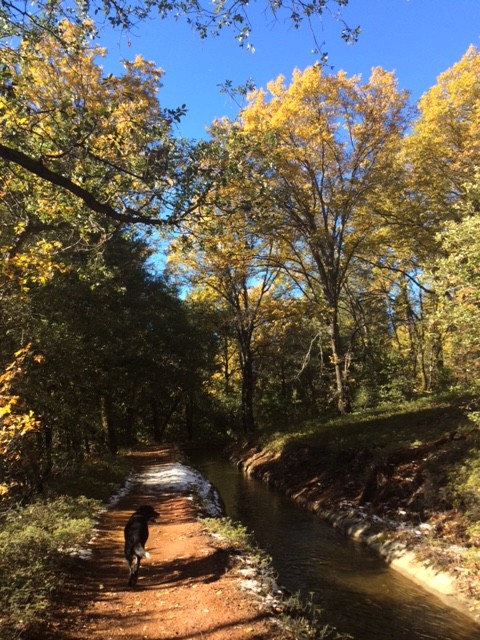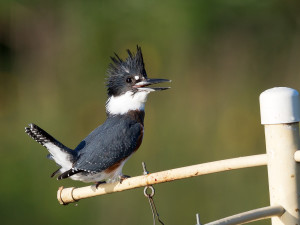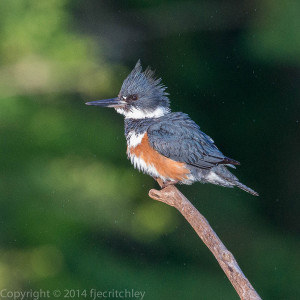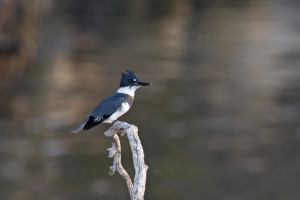If you live in the Central Sierra Nevada foothills, you may be familiar with one of many intricate “ditch” canal systems that are laced among our forests. Local water companies currently use these canals as a way to convey water from rivers or reservoirs to their customers. Often there are well-established dirt trails following these canals that are popular for local residents and visitors as they provide a scenic and easy walking location in a semi-riparian habitat. I happen to be lucky enough to have access within a short walking distance from my house to a really nice section of our local “ditch” system, and find myself taking extended walks on it several days a week. In our semi-arid region these manmade waterways also can attract wildlife, and I have seen mountain lion, bobcat, coyote, great blue heron, several raptor species, rattlesnake, kingsnake, voles, deer, and more during my walks.
This past week I was taking an early morning walk with my furry companion Monster, enjoying the fall colors in the big leaf maples, black oaks, and alders that hang over and surround the canal trail, when I heard an unusual bird call just up ahead of me. Stopping so I could identify where the sound was coming from, I quickly spied the vocalist. It was a belted kingfisher! You can listen to their rattle-like call here. Although not a very uncommon bird (they can be found near waterways all throughout North America), these skilled fish-hunters are always a treat to encounter and a pleasure to watch.  For at least half a mile the kingfisher flew just upstream from where I was walking, keeping me company and calling the whole time. It was quite a treat, and made me want to know more about this quirky bird.
For at least half a mile the kingfisher flew just upstream from where I was walking, keeping me company and calling the whole time. It was quite a treat, and made me want to know more about this quirky bird.
The first thing you might notice about the kingfisher is its distinct appearance. Not particularly small or large (slightly bigger than a stellar jay), they come off as a larger species with their punk rock-esque mohawk and long sharp beak that seems disproportionate to its smaller (but still big) head. Their head and outer wings are a powdery blue, and throats are white. Usually if a bird species has different color markings between the male and female gender, the male is the more colorful of the two (to help attract a mate). But for some reason while both genders have a blue band of feathers across the top of their chest, the adult female kingfisher is the one with the colorful red band across the middle of her chest while the male’s chest is white. 
Belted kingfisher. photo courtesy of John Benson (source: Flickr).

Female belted kingfisher. Photo courtesy of John Critchley (source: Flickr).

Male belted kingfisher, photo courtesy of Kevin Cole (source: Flickr).
What is that long beak for? As the name implies kingfishers are well adapted to fishing, and the long streamlined beak is key for their success at diving into the water and grabbing unsuspecting prey. Another advantage that the kingfisher has developed to make it so successful at fishing is its ability to hover in one place above the water, watching and waiting for the right opportunity to grab its dinner below the surface.
It’s fascinating watching a kingfisher fish. They can reach a speed of up to 70 miles an hour as they dive headfirst into the water. Check out the YouTube video by Redwood Planet Media below to see some great slow-motion video of this bird in action.
Yup – these guys are pretty awesome! I hope you have a chance to encounter this charismatic species some time when you are by the water, and if you do be sure to stop and watch for while.
– Julia Stephens, CSERC Blogger
References
Birds of the Sierra Nevada: Their Natural History, Status, and Distribution. By Edward C. Beedy, Edward R. Pandolfino, Keith Hansen.
Belted Kingfisher – Wikipedia

